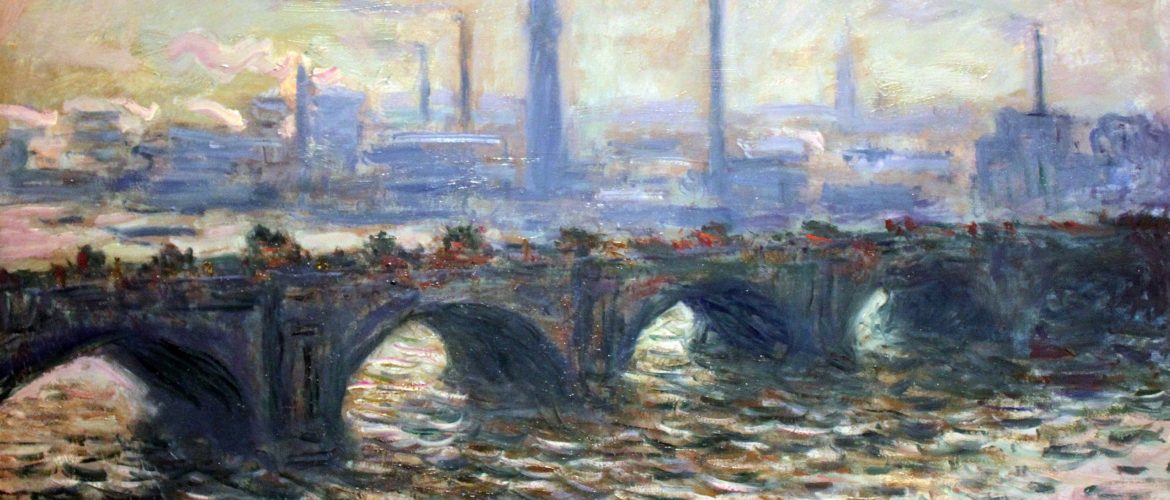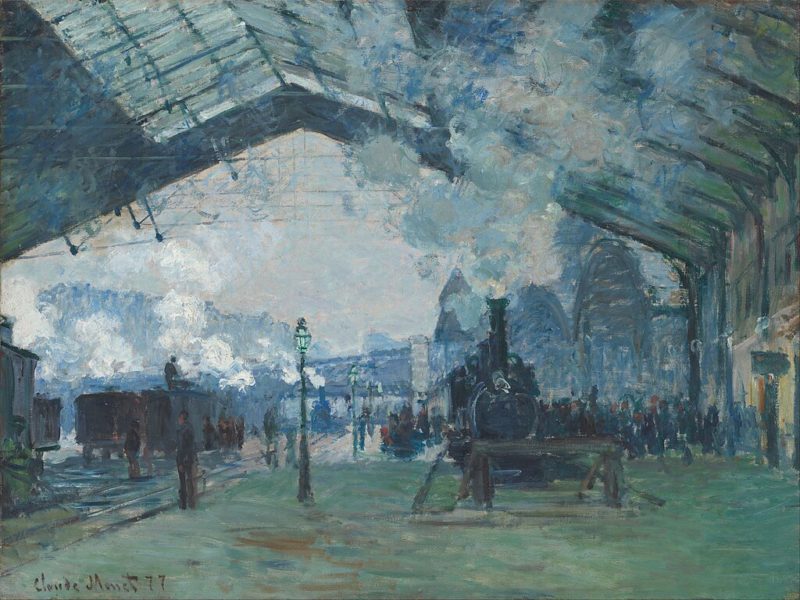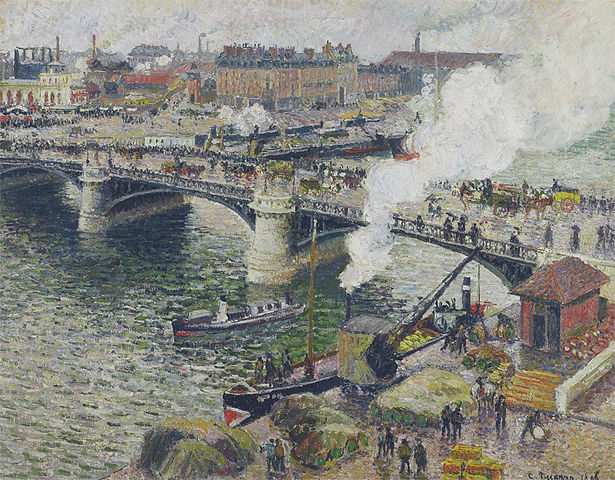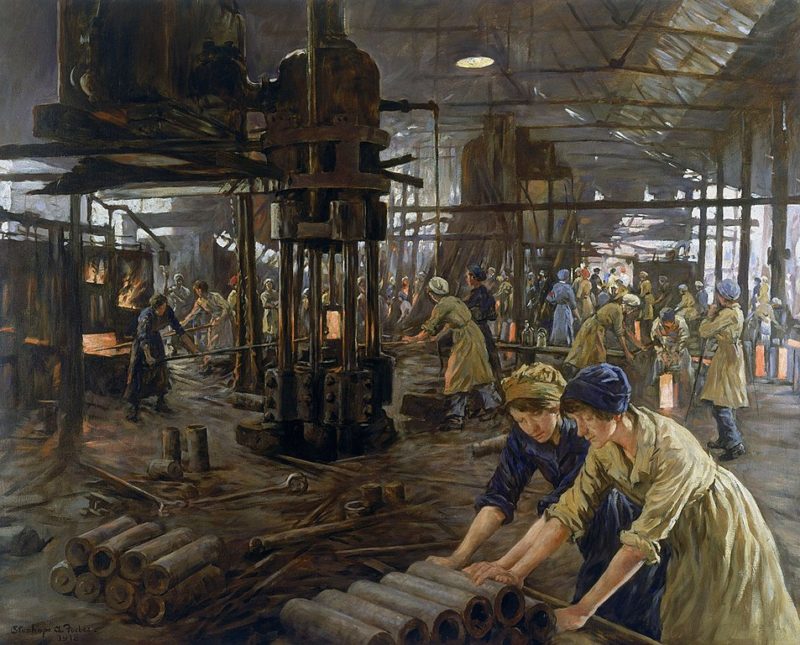Three Famous Industrial Revolution Paintings You Need to Know

The influence of the Industrial Revolution on all aspects of human life is difficult to overstate. The changes it brought about were massive, comparable in their force to only the Agricultural Revolution of the 17th century. Historically exceedingly perceptive of the social and political climate, artists used their art to process and document those changes. Let’s look at some of the most famous Industrial Revolution paintings.
Three Famous Industrial Revolution Paintings You Need to Know
“Arrival of the Normandy Train, Gare Saint-Lazare,” Claude Monet
The late stages of the Industrial Revolution coincided with the appearance of Impressionism. Claude Monet, one of the most well-known representatives of this art movement, was drawn to urban spaces almost as much as he was drawn to nature. While he is now most famous for his idyllic landscapes, he also created a fair share of pieces depicting the industrialized city of Paris, including its beautiful historical architecture, railways, and factories. It is fair to say that the Impressionist artist was fascinated by what he saw. Monet’s “Arrival of the Normandy Train, Gare Saint-Lazare” depicts a railway station covered in clouds of smoke and mist in the master’s signature style.
“Le Pont Boieldieu à Rouen, Temps Mouill,” Camille Pissarro
A recognized father of Impressionism and a close friend of Claude Monet, the French-Danish artist Camille Pissarro revolutionized 19th-century art. Like most Impressionists, he loved painting nature but did not discriminate against more urban landscapes. “Le Pont Boieldieu à Rouen, Temps Mouill” depicts the Pont Boieldieu and the industrial quays surrounding it in Rouen, France. Pissarro visited Rouen in 1896 to capture the city’s industrial modernity and produced a series of paintings of the view from his hotel. This work shows the artist’s interest in moving beyond traditional landscape paintings of rural scenes and focusing on the scurry of the modern city.
“The Munitions Girls,” Stanhope Forbes
Stanhope Forbes was a British artist and the founder of the Newlyn School of Painters in Cornwall. Influenced by the ‘plein air’ painters he met in France and Brittany, he often captured the daily lives of the working class both in rural and urban environments. “The Munitions Girls” was a commission for John Baker and Co. The women in the painting, known as “munitionettes,” handled toxic and dangerous explosives during World War I, which led to them developing serious health conditions. Despite the hazards, many women chose this work because of high pay.
These pieces are just a few examples of famous Industrial Revolution paintings that capture the effects of the Industrial Revolution. Artists of the 19th and 20th centuries found beauty in the rapidly changing urban landscape, similar to that of verdant fields or delicate water lilies. Today, we can see that challenging time through their eyes.



